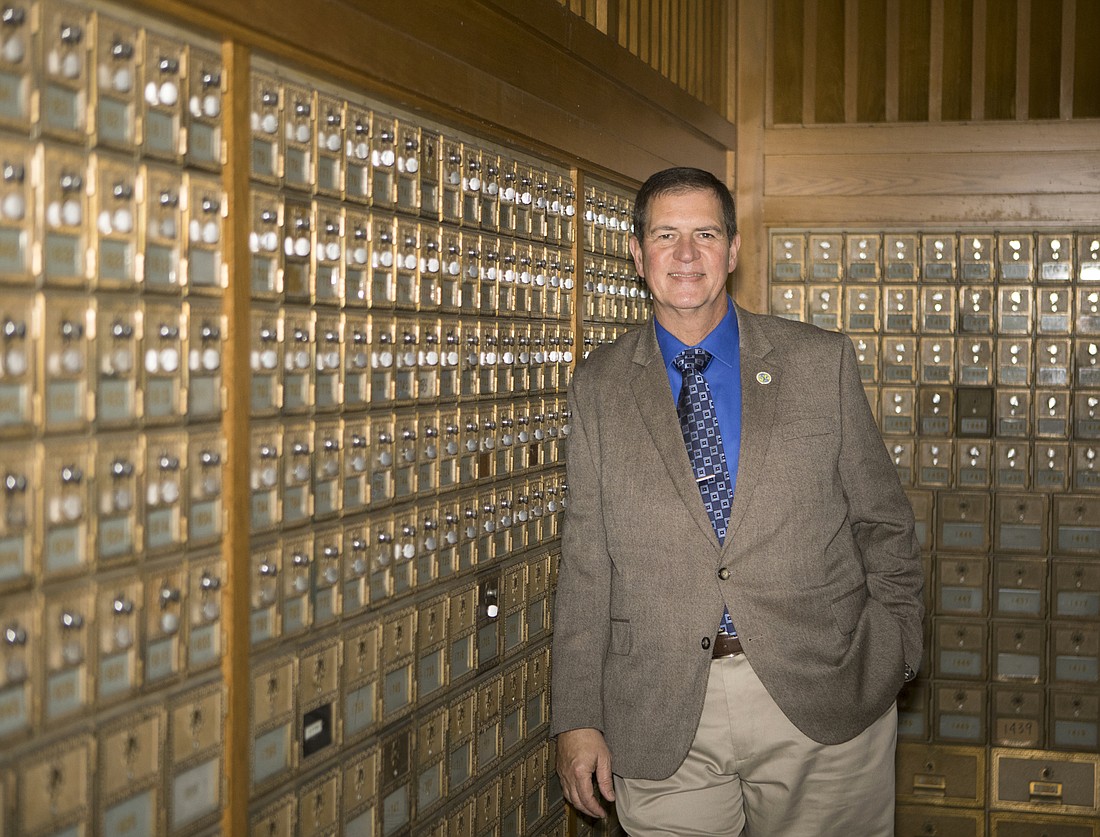- April 11, 2025
-
-
Loading

It took eight months of wrangling with the U.S. Postal Service bureaucracy and working with a local historical society to piece together a muddled title. But in December, Plant City officials finalized its acquisition of the former downtown post office, a building on the prime corner of Reynolds and Wheeler streets that sat vacant and dilapidated for more than a decade.
Built in 1935, the 19,000-square-foot, three-level building was expanded in 1961 and is one of the few commercial structures in the area to boast a full basement, says Plant City City Manager Bill McDaniel. He was appointed in January 2018 and now must figure out what to do with the property, which the city acquired for $315,000, paid from its general fund.
“Developers all over Florida are trying to create what we have authentically and naturally.” Bill McDaniel, city manager of Plant City
“I had hoped somebody would buy it and develop it,” says McDaniel, whose office is across Reynolds Street, at City Hall. “We all had dreams of a steakhouse and whisky bar opening up here. But when no one came along to do that, and it just sat here for years and years, I decided to start making inquiries.”
Plant City’s purchase of the site might seem like an out-of-left-field decision at first glance. Also risky, considering some governments have a checkered history when getting into the development business.
But it’s also a prime example of a municipality not sitting idly by, waiting for someone else to do it. It also makes sense when considered in the larger context of the city’s picturesque, Main Street USA downtown: Plant City has a look and feel that’s rapidly disappearing in an age of e-commerce and urban sprawl, yet often aped by new suburban communities. “Developers all over Florida are trying to create what we have authentically and naturally,” McDaniel says.
Also, the property was just too good of a deal to pass up. “It had been listed at double [what the city paid],” McDaniel says, “maybe a little more than double, originally.”
Investors and developers shied away from the site because they viewed it as too much of a risk, McDaniel says. It would cost too much to raze the post office and redevelop the site, and the building itself was rumored to have mold, mildew and asbestos problems. McDaniels says property inspectors put the lie to such suspicions, and a tour of the clean, bone-dry basement backed up his claim.
“Our building official and his inspectors have been through it and they've remarked quite a bit on the quality of the construction,” he says. “They say, ‘They just don't build them like this anymore.’”
Officials envision the property becoming a City Hall annex but also remain open to working with a private developer who would like to participate in bringing the building back to life, McDaniels says.
The most likely outcome involves using the space to make it easier for citizens to do business with the city — “basically a retail counter operation,” McDaniel says. Utility payment and permitting operations would be moved from the second floor of City Hall to the ground floor of the former post office, and space would be set aside for job seekers to apply and interview for employment with the city. Meeting rooms for employee training, community groups and small conferences would also be created.
“That’s one more asset that would benefit everybody, the community at large,” McDaniel says. “I have my ideas of how the city could use this, but if some commercial entity came along and wanted to talk to me about that steak and whisky bar, or wanted to put offices in here, turn it into a commercial building, we are always willing to talk.”
For now, McDaniel says the plan is to have architects and building infrastructure experts conduct a thorough assessment of the site and what it needs in renovations and upgrades. There’s no budget or timeline in place — McDaniel says it could be years until the property is fully functional. Even though the Depression-era structure doesn’t qualify as a historic property, preserving its open floor plan, subway tile, stone columns and exposed ductwork will be a priority.
“I want to work with the great old ‘bones’ of the building,” says McDaniel. “To me, it's a great acquisition that we were able to get at a fantastic price, and we’re making it a presentable member of downtown. It’s coming back to life. I think that’s a very important thing for us to have done.”